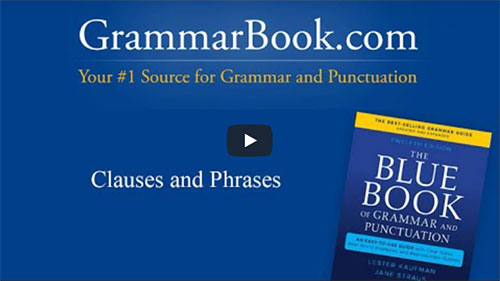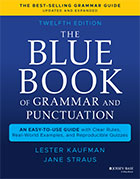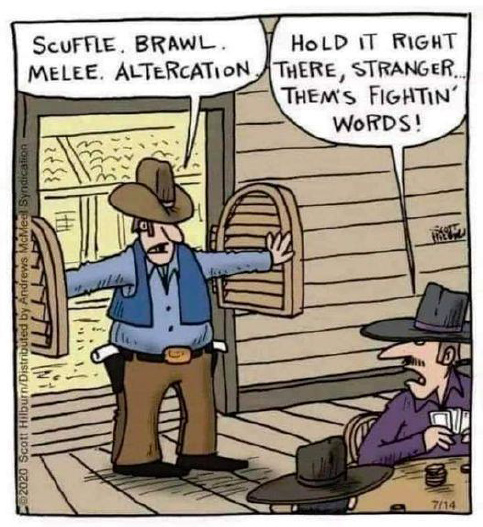|
Language provides more than the means to express and deliver ideas and information. It also bears the power to please us through the tools we use to shape it.
Thoughtful, eloquent communication can satisfy the outer and inner ear as much as awaken the mind. One technique that attracts us to writing and speech is assonance, the repetition of vowel sounds within two or more words with different consonants.
Read the following phrases aloud to yourself:
Examples
the bony hand holding the holy book
the place you set the bookcase
the running crackle of thunder |
Did you notice the matching vowel sounds that stood out?
the bony hand holding the holy book
the place you set the bookcase
the running crackle of thunder |
You also may have noticed that assonance can apply to words that rhyme as well as to those that don't: place, bookcase; bony, holding, holy; running, thunder
Assonance: Why We Use It
We apply assonance to add rhythm, style, and voice to our writing. We'll often find it in songs, prose, movies, and poems because of how it emphasizes sounds in memorable ways.
Examples
"Rock Around the Clock" (song by Bill Haley & His Comets)
"You can go your own way" (lyric from song by Fleetwood Mac)
"Sweet dreams are made of this" (lyric from song by the Eurythmics)
"Hear the mellow wedding bells / Golden bells! / What a world of happiness their harmony foretells!" (from the poem "Bells" by Edgar Allen Poe)
"I feel the need, the need for speed" (popular line from the movie "Top Gun")
"So we beat on, boats against the current, borne back ceaselessly into the past" (from "The Great Gatsby" by F. Scott Fitzgerald)
Consider also the memorable mood achieved by a common saying such as "the squeaky wheel gets the grease" or the impact of a phrase such as "the age of rage." |
Assonance: Useful Guidelines
The following principles will help reinforce your skill with assonance in your writing.
1) Remember that assonance is the repetition of vowel sounds in two or more words. The sounds do not apply to letters used.
Examples
antique amplifier
merry Mary
white knight |
2) The repeating sounds can appear anywhere in the word (start, middle, or end; stressed or unstressed syllable). The words also do not need to be next to one another.
Examples
The antique amplifier is an antidote to the garish new one you bought.
Merry Mary loves picking berries and cherries everywhere.
The white knight is wearing titanium armor. |
3) Assonance can at times be alliteration as well.
Examples
antique amplifier (The "a" sounds are vowels as well as stressed syllables.)
Let's pack before the mosquitoes attack. (Again the "a" sounds are both vowels and stressed syllables.) |
4) In business writing and personal correspondence, assonance can give our communication expressive distinction.
The lessons gained from the quarter's earnings leave us wisely advised.
To this day, the flame of those memories remains the same. |
Assonance: What It's Not
As precise and eloquent communicators, we want to understand both what assonance is and what it is not.
We'll often see assonance in rhymes with identical sounds at the end of lines and words:
| "Yesterday / all my troubles seemed so far away" (from song by the Beatles) |
We'll also often see rhymes that include a vowel sound but end in a consonant sound:
"Jack be nimble, Jack be quick;
Jack jump over the candlestick" (from the nursery rhyme; includes vowel sound "i" but concludes in "ck" sound) |
In Jack's case, we have an example of a consonant rhyme (matching consonant sounds). To be an assonant rhyme, it must end in matching vowel sounds:
"Jack be nimble, Jack be spry;
Jack jump over the pumpkin pie" |
We've mentioned that assonance can be alliterative as well (antique amplifier). However, if we said "let's go before the mosquitoes attack," we would not have both assonance and alliteration because the "o" sounds in "go" and "mosquitoes" are not all stressed syllables.
Simply remember that with alliteration, the repeating vowel sound must be on the first or stressed syllable; with assonance, the repeating sounds can appear anywhere.
Assonance: Vital Restraint
For writing that reaches others with impact and clarity, we will aim to use assonance with proper moderation. Applied with the right touch and rarity, it can grip attention and linger; used with indulgence, it can distract and even seem pretentious or showy.
Consider the following sentence:
| If I may say, you whiled away the day waiting for your time in the sun's rays to pay. |
The sentence may have rhythm and movement with its one- and two-syllable assonance, but it also becomes thickening sonic syrup. Its liberal use of assonance would likely attract undesired attention to style unless within a book for young readers.
We can restore appealing assonance with some touch-up:
| If I may say, you wasted the day trying to get a sun tan. |
Beyond using assonance with greater subtlety, our revision states the same thought more concisely.
| 




